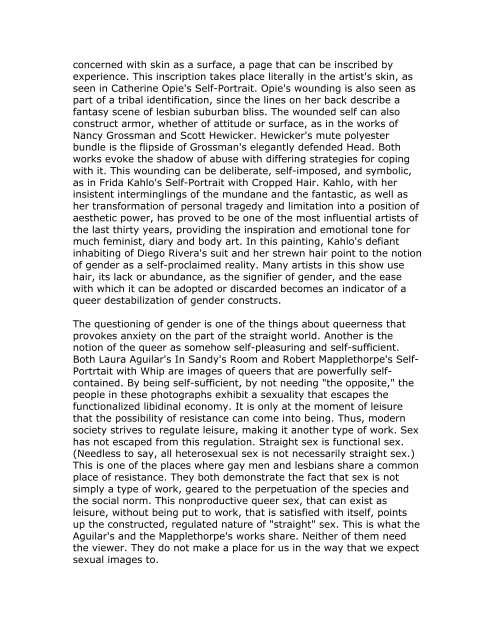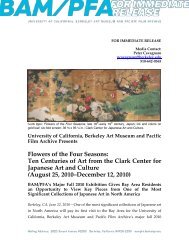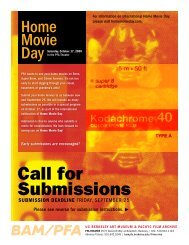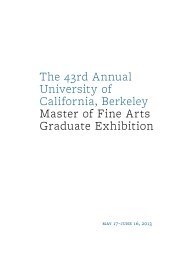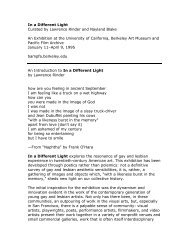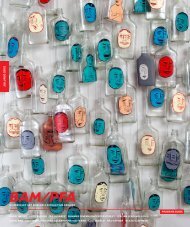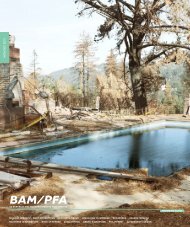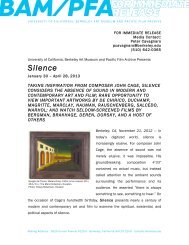Curating In a Different Light by Nayland Blake (PDF) - Berkeley Art ...
Curating In a Different Light by Nayland Blake (PDF) - Berkeley Art ...
Curating In a Different Light by Nayland Blake (PDF) - Berkeley Art ...
Create successful ePaper yourself
Turn your PDF publications into a flip-book with our unique Google optimized e-Paper software.
concerned with skin as a surface, a page that can be inscribed <strong>by</strong>experience. This inscription takes place literally in the artist's skin, asseen in Catherine Opie's Self-Portrait. Opie's wounding is also seen aspart of a tribal identification, since the lines on her back describe afantasy scene of lesbian suburban bliss. The wounded self can alsoconstruct armor, whether of attitude or surface, as in the works ofNancy Grossman and Scott Hewicker. Hewicker's mute polyesterbundle is the flipside of Grossman's elegantly defended Head. Bothworks evoke the shadow of abuse with differing strategies for copingwith it. This wounding can be deliberate, self-imposed, and symbolic,as in Frida Kahlo's Self-Portrait with Cropped Hair. Kahlo, with herinsistent interminglings of the mundane and the fantastic, as well asher transformation of personal tragedy and limitation into a position ofaesthetic power, has proved to be one of the most influential artists ofthe last thirty years, providing the inspiration and emotional tone formuch feminist, diary and body art. <strong>In</strong> this painting, Kahlo's defiantinhabiting of Diego Rivera's suit and her strewn hair point to the notionof gender as a self-proclaimed reality. Many artists in this show usehair, its lack or abundance, as the signifier of gender, and the easewith which it can be adopted or discarded becomes an indicator of aqueer destabilization of gender constructs.The questioning of gender is one of the things about queerness thatprovokes anxiety on the part of the straight world. Another is thenotion of the queer as somehow self-pleasuring and self-sufficient.Both Laura Aguilar's <strong>In</strong> Sandy's Room and Robert Mapplethorpe's Self-Portrtait with Whip are images of queers that are powerfully selfcontained.By being self-sufficient, <strong>by</strong> not needing "the opposite," thepeople in these photographs exhibit a sexuality that escapes thefunctionalized libidinal economy. It is only at the moment of leisurethat the possibility of resistance can come into being. Thus, modernsociety strives to regulate leisure, making it another type of work. Sexhas not escaped from this regulation. Straight sex is functional sex.(Needless to say, all heterosexual sex is not necessarily straight sex.)This is one of the places where gay men and lesbians share a commonplace of resistance. They both demonstrate the fact that sex is notsimply a type of work, geared to the perpetuation of the species andthe social norm. This nonproductive queer sex, that can exist asleisure, without being put to work, that is satisfied with itself, pointsup the constructed, regulated nature of "straight" sex. This is what theAguilar's and the Mapplethorpe's works share. Neither of them needthe viewer. They do not make a place for us in the way that we expectsexual images to.


